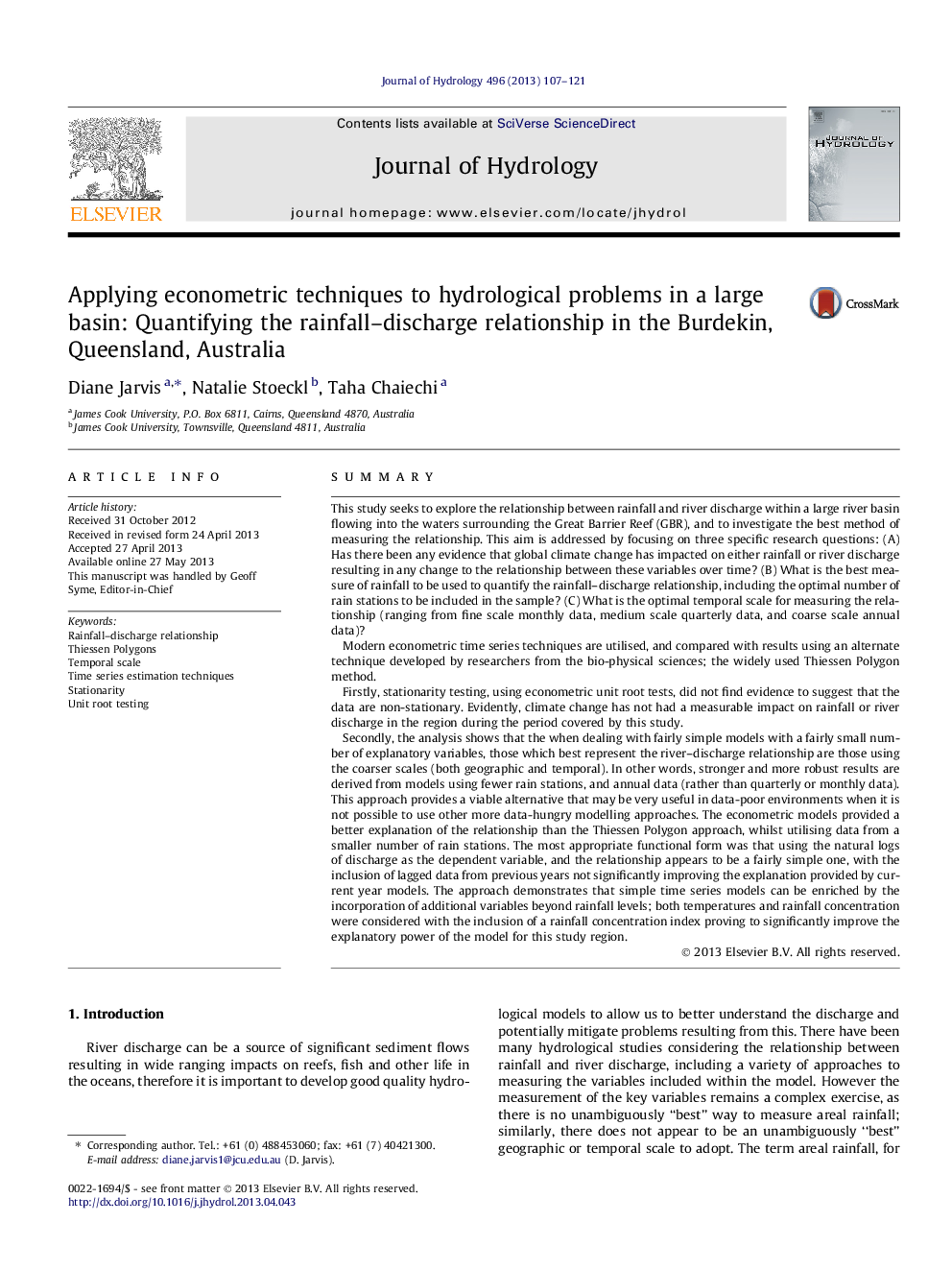| کد مقاله | کد نشریه | سال انتشار | مقاله انگلیسی | نسخه تمام متن |
|---|---|---|---|---|
| 6413725 | 1629952 | 2013 | 15 صفحه PDF | دانلود رایگان |
- Studies rainfall-river discharge relationship within a large tropical river basin.
- Compares different approaches to measuring areal rainfall and different models.
- Finds no evidence of climate change having altered rainfall or river discharge.
- Finds best models have coarse geographic and temporal scale.
- Finds statistical selection and weighting of stations better than Thiessen Polygons.
SummaryThis study seeks to explore the relationship between rainfall and river discharge within a large river basin flowing into the waters surrounding the Great Barrier Reef (GBR), and to investigate the best method of measuring the relationship. This aim is addressed by focusing on three specific research questions: (A) Has there been any evidence that global climate change has impacted on either rainfall or river discharge resulting in any change to the relationship between these variables over time? (B) What is the best measure of rainfall to be used to quantify the rainfall-discharge relationship, including the optimal number of rain stations to be included in the sample? (C) What is the optimal temporal scale for measuring the relationship (ranging from fine scale monthly data, medium scale quarterly data, and coarse scale annual data)?Modern econometric time series techniques are utilised, and compared with results using an alternate technique developed by researchers from the bio-physical sciences; the widely used Thiessen Polygon method.Firstly, stationarity testing, using econometric unit root tests, did not find evidence to suggest that the data are non-stationary. Evidently, climate change has not had a measurable impact on rainfall or river discharge in the region during the period covered by this study.Secondly, the analysis shows that the when dealing with fairly simple models with a fairly small number of explanatory variables, those which best represent the river-discharge relationship are those using the coarser scales (both geographic and temporal). In other words, stronger and more robust results are derived from models using fewer rain stations, and annual data (rather than quarterly or monthly data). This approach provides a viable alternative that may be very useful in data-poor environments when it is not possible to use other more data-hungry modelling approaches. The econometric models provided a better explanation of the relationship than the Thiessen Polygon approach, whilst utilising data from a smaller number of rain stations. The most appropriate functional form was that using the natural logs of discharge as the dependent variable, and the relationship appears to be a fairly simple one, with the inclusion of lagged data from previous years not significantly improving the explanation provided by current year models. The approach demonstrates that simple time series models can be enriched by the incorporation of additional variables beyond rainfall levels; both temperatures and rainfall concentration were considered with the inclusion of a rainfall concentration index proving to significantly improve the explanatory power of the model for this study region.
Journal: Journal of Hydrology - Volume 496, 24 July 2013, Pages 107-121
